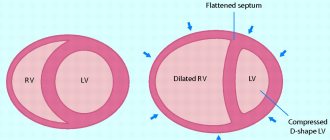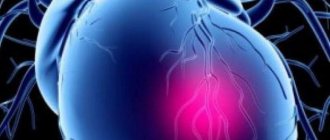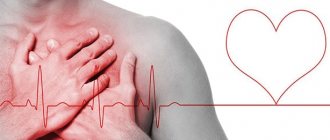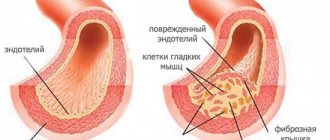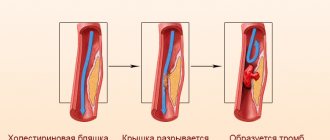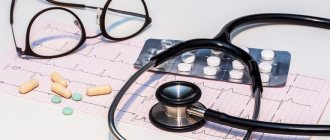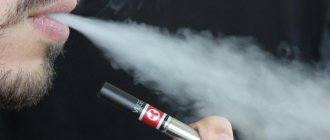Providing assistance to the patient at home until the ambulance arrives
The ability to orientate yourself in a timely manner and provide adequate support to the patient before the ambulance arrives greatly increases his chances of survival.
First aid for myocardial infarction should be provided immediately.
Algorithm of actions
- Immediately call an ambulance (in a conversation with the dispatcher, formulate the symptoms as clearly as possible, voice the suspicion of MI, so that a specialized cardiology or resuscitation team can respond to the call).
- Provide the patient with a semi-sitting position (the elevated position of the upper half of the body reduces the preload on the heart).
- Try to reassure the patient (emotional and physical stress increases the release of vasoconstrictors, which increases myocardial ischemia and increases its oxygen demand).
- Provide oxygen flow (open windows, doors, turn on air conditioning).
- Remove outer clothing and loosen all elements that compress the body (tie, belt, necklace, etc.).
- If possible, measure blood pressure and count pulse . For severe tachycardia, take 1 tablet of Anaprillin; for hypertension, take 1 tablet of Captopril.
- Give "ASA" (150-325 mg) or "Clopidogrel" (100 mg) . The effect will occur faster if the tablets are chewed.
- Give 1 tablet sublingually . "Nitroglycerin" . Repeat the dose every 5 minutes (but no more than 3 doses).
- Before the ambulance arrives, it is prohibited to take non-narcotic analgesics!
If the patient suddenly loses consciousness, stops breathing and cardiac arrest occurs, it is necessary to perform cardiopulmonary resuscitation before the doctors arrive:
- position the patient lying on his back, tilt his head back, place a cushion under his neck, push out the lower jaw (prevention of obstruction of the airways with the tongue);
- check the pulse in the carotid artery;
- perform indirect cardiac massage and perform artificial respiration with a frequency of 30:2 if the procedure is performed by one person, or 15:1 if two people perform the procedure. Pressing should be done quickly (100 per minute), rhythmically and with sufficient force to ensure cardiac output;
- check every 2-3 minutes to see if a pulse appears.
Care during inpatient rehabilitation
During the period of inpatient rehabilitation, a set of measures to care for a patient who has suffered a myocardial infarction includes:
- Monitor compliance with bed rest for at least 2-3 days. If the patient is in a supine position for more than a week, then prevention and treatment of bedsores should be carried out daily.
- Continuous monitoring of cardiac performance indicators . The most important indicators are heart rate, breathing rate and blood pressure values.
- Monitor and take part in the preparation of a properly selected diet . Meals should be frequent, but in small portions, approximately 100-150 grams of food per meal. It should be easily digestible and not overload the intestines.
- Maintaining hygiene rules . All procedures, including bathing, washing, as well as urination and defecation, must occur strictly in a lying position. If the patient has not had a bowel movement for more than 2 days, then you can resort to laxatives.
- Performing a massage . Any excessive physical activity during inpatient rehabilitation is contraindicated. But in order to more or less maintain muscle tone, it is necessary to regularly massage the patient’s limbs (particular attention should be paid to the feet), and also give the patient some time (no more than 15 minutes a day) to spend in a sitting position.
After the patient gets better (the period of improvement, in the absence of serious complications, occurs 5-7 days after the heart attack), the patient is allowed to sit more and also move independently over short distances. He can carry out hygiene procedures independently.
Pre-hospital emergency room
The standard for the arrival of an EMT team in the city is 10 minutes, outside the city limits - 20 minutes after registering a call with the dispatch service. If we take into account weather conditions, the epidemiological situation and the traffic situation, it is possible that the time may be exceeded (no longer than 10 minutes).
According to the protocol, the algorithm of the team’s actions upon arrival to the patient includes:
- Anamnesis collection (if possible).
- If necessary, perform resuscitation measures (ventilation, chest compressions, defibrillation).
- Conducting an examination and physical examination to assess the condition of the cardiovascular and respiratory systems.
- Registration of 12 leads ECG with repeat after 20 minutes.
Pulse oximetry (if saturation is below 95% - oxygen support by mask or through nasal cannulas 3-5 l/min.).- Determine the level of troponins I, T in the blood (if a portable test is available).
- Providing venous access.
- Actually emergency medical care:
- Nitroglycerin 0.5-1 mg every 10 minutes. In case of severe pain, intravenous drip administration under the control of SBP (not lower than 90 mm Hg);
- relief of an anginal attack with narcotic analgesics. Preferably, Morphine 2-5 mg every 10-15 minutes until the pain stops (total dose not exceeding 20 mg);
- "ASA" 150-325 mg chewed, if the patient did not take it before the ambulance arrived;
- conducting dual antiplatelet therapy - Ticagrelor 180 mg, in its absence, Clopidogrel is prescribed at a dose of 300 mg;
- short-acting beta blockers - Propranolol, Metoprolol;
- reduce the load on the myocardium by lowering blood pressure and correcting hemodynamic disturbances.
If possible, it is recommended to carry out thrombolysis therapy TLT (streptokinase, alteplase, actilyse) at the prehospital stage. If thrombolysis can be carried out within 2 hours from the onset of ischemic changes (optimally within 60 minutes), this can interrupt the development of necrosis during MI, reduce the affected area and significantly reduce mortality. TLT is not effective if more than 12 hours have passed since the onset of the painful attack. Also, the procedure is not performed in the presence of absolute contraindications: intracranial bleeding or hemorrhagic stroke over the past 3 months, malignant brain tumor, abdominal aortic aneurysm with a tendency to dissection, bleeding from the gastrointestinal tract during the last month, disorders of the hemostatic system.
All patients with ACS are hospitalized in the intensive care unit of a specialized cardiology hospital with the ability to perform emergency angiography and reperfusion interventions.
Emergency medical care and principles of hospital treatment
Emergency medical care for myocardial infarction begins with relief of acute pain. For this, various analgesics (Analgin) and narcotic drugs (Promedol, Morphine, Omnopon) in combination with Atropine and antihistamines (Diphenhydramine, Pipolfen, etc.) can be used.
For a faster effect, painkillers are administered intravenously. Seduxen or Relanium is also used to eliminate the patient's anxiety.
Then, to assess the severity of the heart attack, the patient is given an electrocardiogram. If hospitalization is possible within half an hour, the patient is immediately transported to a medical facility.
Expert opinion
Tarasov Dmitry Timofeevich
Master of Sports in mountaineering. Author of scientific articles on the topic of survival in the wild
If it is impossible to transport the patient to the hospital within 30 minutes, thrombolytics (Alteplase, Purolase, Tenecteplase) are administered to restore coronary blood flow.
A stretcher is used to transfer the patient to the ambulance, and during transportation to the intensive care unit, humidified oxygen is inhaled. All these measures are aimed at reducing the load on the heart muscle and preventing complications.
This is interesting: How to hunt a brown hare along the black trail without a dog
After arrival at the intensive care unit, to eliminate pain and agitation, the patient is given neuroleptanalgesia with Talamonal or a mixture of Fentanyl and Droperidol. In case of a prolonged angioedema attack, the patient can be given inhalation anesthesia using a gaseous mixture of nitrous oxide and oxygen.
Next, the patient is prescribed the following medications:
- Nitroglycerin, Isosorbide dinitrate, Isoket - in the acute period of a heart attack, these drugs are used to reduce the myocardial oxygen demand, first they are administered intravenously, and after stabilizing the patient's condition - orally and sublingually.
- Beta blockers (Anaprilin, Inderal, Obzidan, Propranolol) - help slow the heart rate and reduce the load on the heart.
- Antiplatelet agents (Aspirin) thin the blood and prevent the development of a new heart attack.
- Anticoagulants (Heparin) - used to prevent recurrent heart attacks and reduce blood clotting.
- ACE inhibitors (Ramipril, Captopril, Enalapril, etc.) are used to lower blood pressure and reduce the load on the heart.
- Sedative and hypnotic drugs (Diazepam, Oxazepam, Triazolam, Temazepam, etc.) are used when it is necessary to limit the patient’s activity and for sleep disorders.
- Antiarrhythmic drugs (Novocainamide, Rytmilen, Lidocaine, Difenin, Amiodarone, etc.) are used for cardiac arrhythmias to stabilize cardiac activity and reduce the load on the myocardium.
Other pharmacological drugs can be used to treat myocardial infarction, since the tactics of drug treatment of the patient depends on the general condition of the patient and the presence of other pathologies (diseases of the kidneys, blood vessels, liver, etc.).
Also, for the treatment of myocardial infarction, modern medicine uses various instrumental, highly effective techniques to restore coronary blood flow:
- balloon angioplasty;
- coronary artery bypass grafting.
Such surgical techniques allow patients with severe forms of myocardial infarction to avoid serious complications and prevent the high risk of mortality from this cardiac pathology.
What determines the success of providing first aid to a patient with myocardial infarction?
The quality of first aid provided to a patient depends on many factors:
- knowledge of the person providing assistance, the algorithm of actions in case of a heart attack, the ability to perform resuscitation actions;
- time elapsed from the attack to the onset of actions;
- medication and instrumental support (tonometer, Nitroglycerin, Aspirin);
- the staffing of ambulance teams with the necessary equipment, medications, and personnel qualifications;
- distance from specialized cardiology departments.
There are also factors that aggravate the course of a heart attack, and thereby reduce the chances of success:
- age over 70 years;
- concomitant pathology (diabetes mellitus, obesity, kidney pathology, widespread atherosclerosis, hypercholesterolemia, hypertension);
- painless onset of ischemia or atypical clinical picture;
- extensive focus of necrosis (transmural MI) with cardiogenic shock;
- the occurrence of severe arrhythmias and cardiac conduction disorders.
Brief description of the disease
Etiopathogenetic aspects of myocardial infarction
Myocardial infarction is ischemic necrosis of the myocardium due to an acute discrepancy between the coronary blood flow and the needs of the myocardium, associated with occlusion of the coronary artery, most often caused by thrombosis.
Etiology. In 97-98% of patients, atherosclerosis of the coronary arteries plays a major role in the development of myocardial infarction. In rare cases, myocardial infarction occurs as a result of embolism of the coronary vessels, the inflammatory process in them, and severe and prolonged coronary spasm. The cause of acute coronary circulatory disorders with the development of ischemia and necrosis of a portion of the myocardium, as a rule, is thrombosis of the coronary artery.
Pathogenesis. The occurrence of thrombosis of the coronary arteries is facilitated by local changes in the intima of the vessels (rupture of an atherosclerotic plaque or a crack in the capsule covering it, less often hemorrhage into the plaque), as well as an increase in the activity of the coagulation system and a decrease in the activity of the anticoagulation system. When a plaque is damaged, collagen fibers are exposed, and platelet adhesion and aggregation, release of platelet-derived blood coagulation factors, and activation of plasma coagulation factors occur at the site of damage. A blood clot forms, closing the lumen of the artery. Coronary artery thrombosis is usually combined with its spasm. The resulting acute occlusion of the coronary artery causes myocardial ischemia and necrosis. The accumulation of under-oxidized metabolic products during myocardial ischemia leads to irritation of myocardial interoreceptors or blood vessels, which is realized in the form of a sharp anginal attack.
conclusions
Rationally provided first aid to a patient with MI directly increases the patient’s chances of survival and reduces the likelihood of complications in the future.
As world practice has shown, many deaths occur even before the arrival of specialized medical teams.
Therefore, it is very important to teach patients to recognize the first signs of an attack and be able to help themselves at the very beginning of the situation. All patients at risk must follow the doctor’s recommendations and adhere to the principles of a healthy lifestyle.
It is also important to inform the patient’s relatives about how to recognize the onset of ischemia and the rules for providing first aid for a heart attack at home.
Outpatient interventions
After discharge home from a medical institution, the patient’s rehabilitation period does not end. For the heart to function in the correct rhythm, it is necessary:
- Advise the patient about the need to follow a certain diet. Usually, it is prescribed by the attending physician. The patient needs to give up large amounts of cholesterol, trans fats and harmful food additives.
If the diet is not balanced and, in most cases, includes fatty, spicy and smoked foods, then the risk of complications and the occurrence of a secondary heart attack increases several times.
- Talk about the benefits of physical activity . The patient can study independently or attend special classes. Without physical therapy, recovery after a heart attack will be very slow and incomplete.
- Conduct a preventive conversation about the dangers of alcohol and smoking . You need to try to convey to the patient that both of these bad habits must be completely eliminated from his life.
- Sanatorium treatment . To support the body, you can send the patient for some time to a sanatorium or dispensary that specializes in people who have suffered a myocardial infarction. Such institutions provide a full range of measures recommended for such patients.
In addition to all of the above, the patient must be told about the schedule of mandatory examinations, as well as timely observation by the attending physician.
Symptoms of a heart attack
A disease such as a heart attack is accompanied by the death of myocardial tissue due to impaired blood circulation in the muscle of the heart organ. Everyone should know the main symptoms of the disease, because... from the correct provision of medical care to the arrival of a team of specialists, this is a high chance not only for a person to survive, but also to lead a normal life in the future.
Consider the symptoms that indicate myocardial infarction:
- Intense pain syndrome in the left side of the sternum, radiating to the arm, neck, shoulder blade and jaw. Such symptoms can occur both during physical activity and at rest. The pain is wave-like for a long time. Nitroglycerin only dulls the sensation and does not completely eliminate the symptom.
- Feelings of anxiety and fear of death. A person’s movements at the beginning of an attack are fussy.
- Weakness in the body. In some cases, this symptom takes first place if there is no pain. Most often this occurs in the presence of diabetes mellitus.
- Cold type sweating.
- The skin is pale in color.
- Feeling of nausea, sometimes vomiting.
However, the symptoms of a heart attack may be non-standard, resembling asthma or pancreatitis in acute form, when the pain syndrome is localized in the abdominal area, and can also manifest itself in the form of vomiting and flatulence.
The symptoms are well presented in the figure above - save it to your mobile device to recognize the signs of a heart attack in time.
From the above information, it follows that the symptoms must be considered together, taking into account heart disease. When an attack occurs in a stranger, you must try to find out the presence of heart pathologies. Emergency care for myocardial infarction should be carried out in accordance with the data obtained. Otherwise, the situation may worsen.
Clinical picture of the disease
Myocardial infarction can occur as a result of:
- Heredity
- Alcoholism
- Tobacco smoking
- Emotional stress
- Diabetes mellitus
- Overweight
In the presence of this disease, a painful attack occurs in the heart area, which cannot be eliminated with the help of nitroglycerin. Some people may experience abnormal heart rhythm, development of heart failure, or cardiogenic shock.
Patients say that pain in the heart area appears suddenly.
During this period, patients may experience a strong fear of death.
Nursing care during attacks
Before the doctor arrives, the nurse should measure your pulse and blood pressure
If a patient suspects a myocardial infarction has pain in the heart area, the nurse must call a doctor for help. Before his arrival, she must first reassure the patient, measure blood pressure and assess the state of the pulse.
The patient needs to have mustard plasters placed in the area of the heart and on the sternum. If the attack is prolonged, the nurse should place medicinal leeches on the heart area.
It is also necessary to give the patient nitroglycerin without fear. If the medication is in the form of tablets, then the patient must be given 5 milligrams of the drug; if there is a one percent alcohol solution of nitroglycerin, it must be given to the patient one drop on a validol tablet or a piece of sugar.
Next, the nurse needs to give the patient Corvalol or Valocordin in the amount of 25-30 drops. Before the doctor arrives, it is necessary to carefully monitor the patient’s health condition.
After the doctor arrives, the nurse tells him about the blood pressure and pulse readings, as well as the general condition of the patient. Based on these data, the doctor prescribes treatment.
The nurse must work patiently and show restraint and calm, this will lead to positive results when treating patients.
You should not rush or fuss while providing assistance, as this can frighten the patient, who is already frightened. The effect of treatment directly depends on how well the nurse recognizes the nature of pain in the heart area. In some cases, patients' lives depend on it.
At the same time, we should not forget that she is not only a nurse, but a sister of mercy. It should help a person not only physically, but also morally, support and encourage him.

